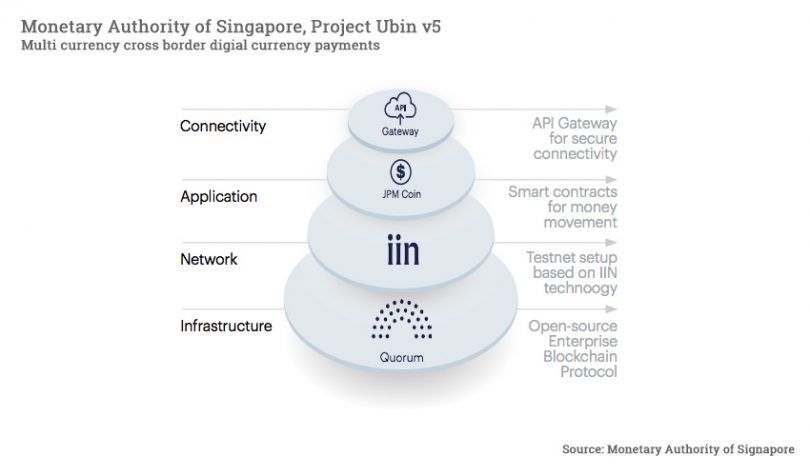The Monetary Authority of Singapore said its multi-currency payment network prototype is a success, and it looks forward to seeing similar systems in action. The prototype was phase five of Project Ubin, a series of experiments that started by focusing on central bank digital currencies (CBDC). This final phase enabled multiple fiat currencies to exist on the same payments network, issued by either central banks or commercial banks.
The goal was to demonstrate the possibility of faster and cheaper transactions, including for cross border payments. The transaction savings are not just for the payment itself, because in many cases, such a system reduces the cost of the business transaction to which the payment relates.
For example, many business transactions require intermediaries or central counterparties to bear the risk of non-payment. By enabling immediate settlement – delivery versus payment – that risk disappears and hence the cost of intermediation is removed.
MAS and sovereign wealth fund Temasek published a report “Project Ubin Phase 5: Enabling Broad Ecosystem Opportunities“, in conjunction with project partners JP Morgan and Accenture. JP Morgan’s role was combining its JPM Coin technology with its Interbank Information Network for messaging to create the payments network. Accenture explored how the network could be used for specific use cases.
“As with all innovation adoption, there is a time for experimentation, and a time for commercialisation,” said Sopnendu Mohanty, Chief FinTech Officer, MAS. “Project Ubin has worked with the financial industry and blockchain community on a journey of experimentation, prototyping and learning. This has built a strong foundation of knowledge, expertise and experience, and paved a path towards commercial adoption.”
“Phase 5 of Project Ubin has demonstrated the commercial applicability, viability and benefits of blockchain technology across industries, beyond capital markets and trade finance,” said Chia Song Hwee, Deputy Chief Executive Officer, Temasek
Accenture case studies
Accenture’s role was to explore some of the use cases that would benefit from cross border payments that settle immediately. Given the biggest benefit is for on-chain blockchain payments, the consultants whittled down an initial list of 124 use cases to 16 across four sectors. The paper emphasized that “it is unclear at this stage which of the projects will be successful.”
Six capital markets use cases were identified with 1exchange, iSTOX, STACS, iLex & IHS Markit, Allinfra and Sygnum. For trade and supply chain finance, it chose Digital Ventures (Siam Cement), Invictus, Marco Polo, essDOCS and Crediti.
Digital Asset and Immediate were selected as insurance applications. And outside of financial services, the use cases were Aqilliz for advertising and Octomate & Adecco for salary payments.
The paper explores eight use cases in depth. For example, in the case of investing in private companies, blockchain could help with poor price discovery, enhance liquidity by broadening the pool of investors and improve operational efficiency. Additionally, it can improve usability. For example, there is an atomic transaction where a stock is bought and the payment is made simultaneously. This reduces risk and cost but also provides one user interface for both the transaction and payment.
JP Morgan technology
The platform leveraged three JP Morgan innovations: JPM Coin, JP Morgan’s IIN and JP Morgan’s enterprise blockchain Quorum.
There are five components of the platform:
- The ledger interoperability service enables the issue of digital currency by converting bank balances held at either central bank or commercial banks
- The gateway communication service connects to non-blockchain external systems
- The blockchain ledger holds currency balances and acts as a payments rail
- User connectivity sending instructions via web and application programming interfaces
- The digital currency, which is the fiat digital token.

The solution incorporated a wallet that could be self custodied, or use a third-party custodian, or the end user’s bank could act as custodian.
If you convert a bank balance into digital currency, getting your bank to look after your wallet makes sense for some. But our observation is it opens up the possibility of extending the bank’s “trusted” role beyond currencies.






